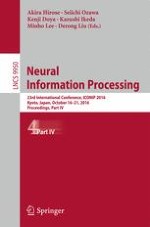2016 | OriginalPaper | Chapter
Self-organization on a Sphere with Application to Topological Ordering of Chinese Characters
Author : Andrew P. Papliński
Published in: Neural Information Processing
Publisher: Springer International Publishing
Activate our intelligent search to find suitable subject content or patents.
Select sections of text to find matching patents with Artificial Intelligence. powered by
Select sections of text to find additional relevant content using AI-assisted search. powered by
